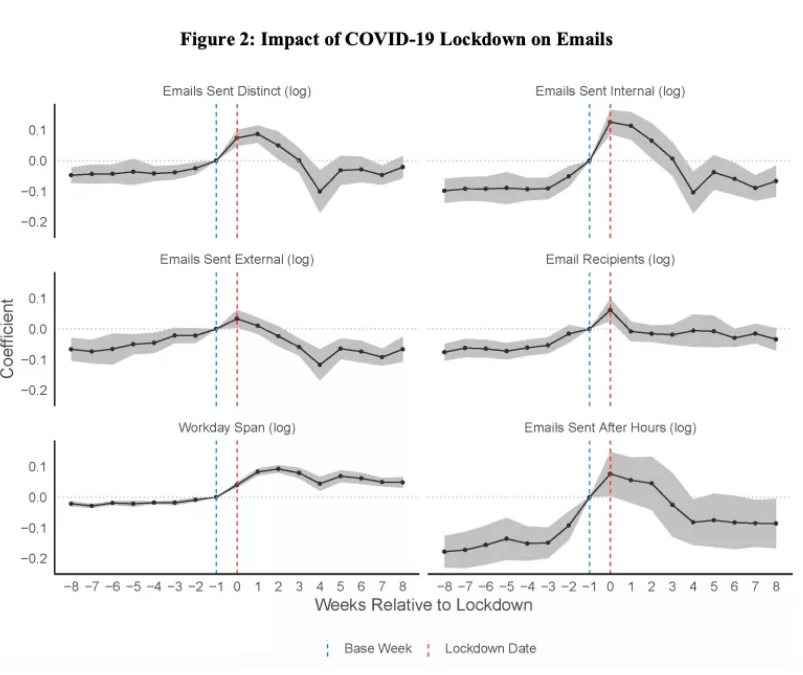Employees based at home during COVID-19 lockdowns have seen the length of their working days increase, according to a new report. They have also been sending more emails and attending more meetings – although those were not as long as those before the pandemic.
- The average workday during lockdown was 48 minutes longer, report says.
- So did employees become more flexible to deal with distractions?
- Or has the line between work and home life become blurred?
The changing nature of work during the crisis has been studied by the US National Bureau of Economic Research (NBER).
It’s a subject that will interest millions – a separate report found that 98% of people would like the option of being able to work remotely for the rest of their careers.
Benefit or Drawback?
While many have found their working days extended, the NBER report points out that they are not necessarily occupied for all that time. Some people may have chosen to adopt a more flexible working arrangement, perhaps taking into account the demands of home life and children.
“It is unclear if this increase in average workday span represents a benefit or drawback to employee well-being,” concludes the report from researchers at Harvard Business School and New York University.
“On the one hand, the flexibility to choose one’s working hours to accommodate household demands may empower employees by affording them some freedom over their own schedule. On the other hand, the change in work schedule may be a consequence of a blurred distinction between work and personal life, in which it becomes easy to overwork due to the lack of clear delineation between the office and home.”
Extra Emails
The authors studied 3.1 million workers from more than 21,000 firms in more than a dozen cities in North America, Europe and the Middle East. They analyzed digital data on meetings and emails from eight weeks before government-backed lockdowns to up to eight weeks after.
Looking at the time between the first and last email sent or meeting attended in a 24-hour period, they found that the average workday increased by 48.5 minutes, partly due to more emails being sent after business hours. Emails sent and received among people from the same organization were up by around 5%.
They also found that the total number of daily meetings per person rose 12.9% and the average number of attendees was up 13.5% – but the average duration of meetings fell 20.1%. This means that the total number of hours employees spent in meetings each day during the post-lockdown period fell by 18.6 minutes per person.
Distraction Factor
Meeting length declined in every city studied, but the data varied from area to area. In many European cities, the decrease was sharp and continued to drop for four weeks after the lockdown, while in US cities like Chicago, New York City, and Washington DC, the decrease in meeting length was relatively small and stabilized a week after the lockdown.
The authors suggest that employees may have found it harder to concentrate in virtual meetings and may have had to cope with distractions at home.
But what is perhaps more important is that the findings demonstrate our ability to adjust when faced with challenges. “It will remain to be seen whether these changes persist,” concludes the report.
This article by the World Economic Forum was republished in accordance with the Creative Commons Attribution-NonCommercial-NoDerivatives 4.0 International Public License.
